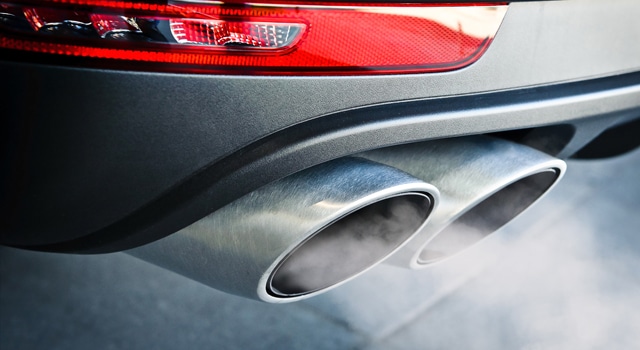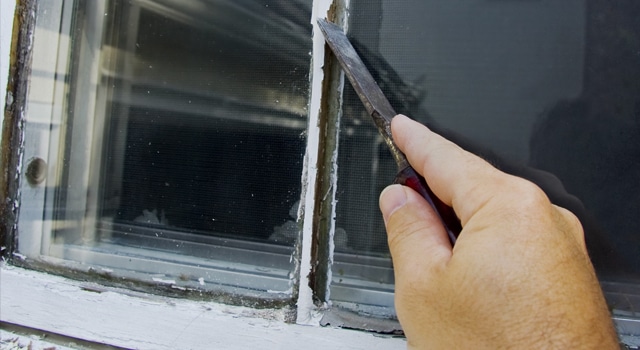Many school districts face a toxic chemical threat within their aging school buildings. Approximately half of the public buildings constructed between 1950 and 1978 contain polychlorinated biphenyls (PCBs) well above federally permitted levels.
The PCBs within the buildings are often present at 200 to 1000 times this permitted level. Remediating PCBs within buildings in order to bring them into compliance with federal law could cost a school district millions of dollars.
How PCBs Were Used
PCBs are a manmade chemical best known for their use as coolants and lubricants in transformers, capacitors and other electrical equipment. The manufacturer of PCBs, however, also sold the chemical for a variety of different uses.
During the 1950s to 1970s, PCBs were used in caulking, oil-based paints, thermal insulation material, fluorescent light ballasts, and adhesives and tapes (including ceiling mastics). Given these uses, PCBs were prevalent in public construction during this period.
Studies conducted in San Francisco and Boston have helped to quantify the chances of a public building containing PCBs.
PCBs are also common in lighting ballasts of original fluorescent lights in these buildings. If there have not been renovations or retrofitting, it is likely that older lighting fixtures containing PCBs still remain.
The Federal Standards for PCBs
Two different federal standards are relevant to the presence of PCBs in school buildings. The first standard concerns the use of PCBs in open system materials and the second addresses them in the air.
Federal regulations prohibit the use of products containing PCBs at or above 50 parts per million (ppm). This number is essentially meaningless if the original construction involved the use of PCBs in caulking or ceiling mastics.
If the contractor blended PCBs into caulking material to enhance the elasticity and durability of the caulking, the PCB levels will be in the tens of thousands ppm, and may exceed 100,000 ppm. Along with the caulking itself, the passage of time has probably resulted in PCB contamination migrating into surrounding material or even into the soil outside school windows.
The EPA has also established air standards for PCB exposure. These numbers address the level of PCBs in the dust that is in the air. This dust rests on desk tops and in ventilation systems. These standards vary by the age of the individuals:
| Age | 2<3 | 3<6 | 6<12 | 12<15 | 15<19 | 19+ |
| Level (ppb) | 70 | 100 | 300 | 450 | 600 | 450 |
Various factors may impact PCB air levels. For example, testing has demonstrated that the amount of PCBs in air levels increase during summer months due to higher temperatures.
Health Risks Associated with PCBs
Conclusive evidence exists that commercial PCB mixtures are carcinogenic in animals. Once PCBs enter an individual’s body, they accumulate in the fatty tissue and tend to remain there.
Based on this and other available information, and following a new assessment of PCBs’ carcinogenicity in 1996, the EPA concluded that PCBs are a probable carcinogen.
Studies also indicate other potential health risks. Birth defects have been linked to mothers who have been exposed to PCBs.
Developing fetuses and young children are the most vulnerable to PCBs. Therefore, children and women who may become pregnant, are pregnant, or are nursing should limit their exposure to PCBs.
A Michigan study indicated that pregnant women exposed to high levels of PCBs give birth to children with significant neurological and motor control problems. Their children are also born with a lower average weight and smaller head size.
PCBs may also disrupt hormonal function, the immune system, and interfere with liver and thyroid functions.
Impact of PCBs on School Districts?
School districts typically discover the presence of PCBs within their buildings during major renovations. The identification of PCBs within building materials, in most circumstances, necessitates remediation work to remove the PCBs.
The EPA requires school districts to remediate buildings where PCB levels in materials exceed 50 ppm. Because the government categorizes construction debris containing PCBs as a hazardous waste, removal requires special handling, removal and disposal.
These remediation efforts may cost the school district several million dollars, depending on the size of the building and the extent of the PCB presence.
The EPA issued guidelines for school districts in 2009, directing testing when the district is demolishing or renovating a building. The EPA recommends testing peeling, brittle, cracking or deteriorating caulk directly for the presence of PCBs.
The federal regulations only compel mandatory testing within school buildings in this situation. As a result, the presence of this toxic chemical remains undetected in thousands of buildings across the country.
Identifying the Presence of PCBs
PCBs defy immediate identification in most situations. Testing of the materials throughout the building is a necessary first step in the identification of PCB contamination.
Leaking ballast in an old fluorescent light is an obvious, probable source. However, an individual cannot look at exterior door caulking in a school building and state whether or not it contains PCBs. Various environmental consultants are available to perform such testing.
If you have any further questions, the attorneys in Weitz & Luxenberg’s Environmental Toxic Torts group can recommend testing companies to contact, assist in your interaction with the EPA and provide information about potential legal options.
 William A. Walsh
William A. Walsh 

